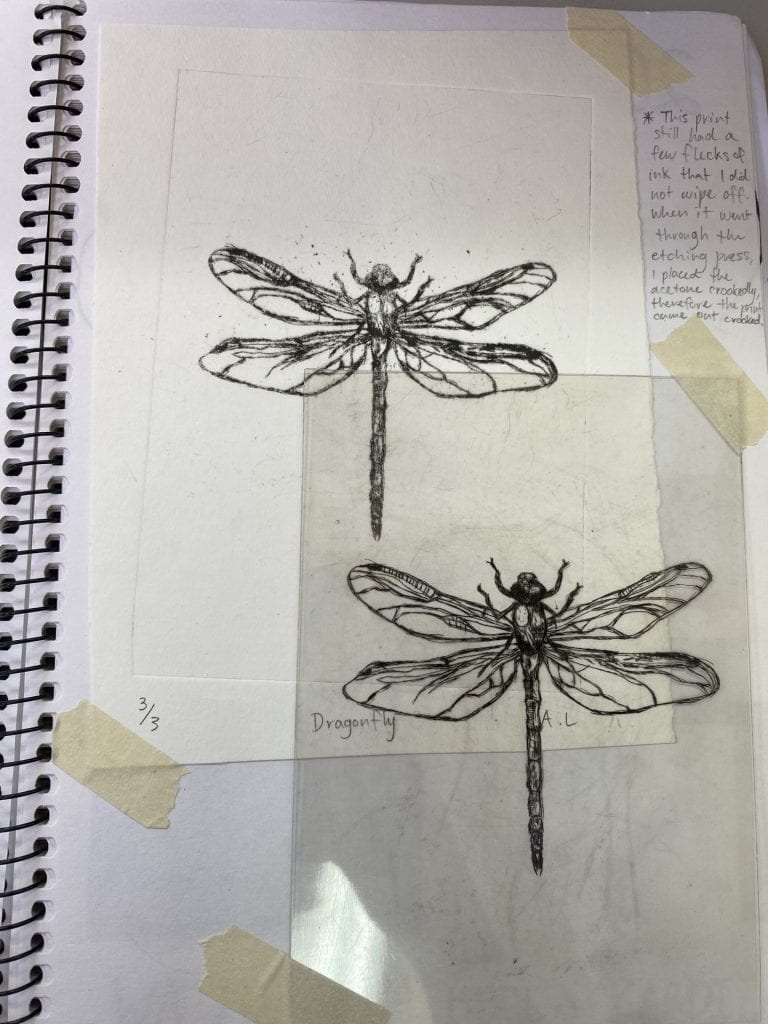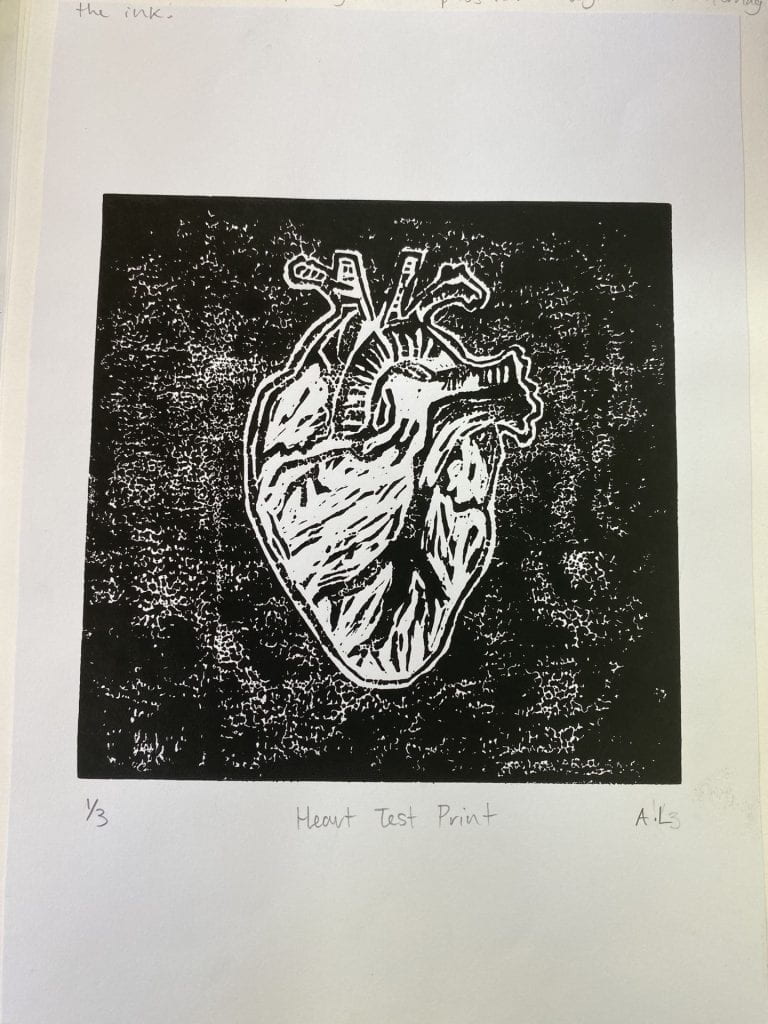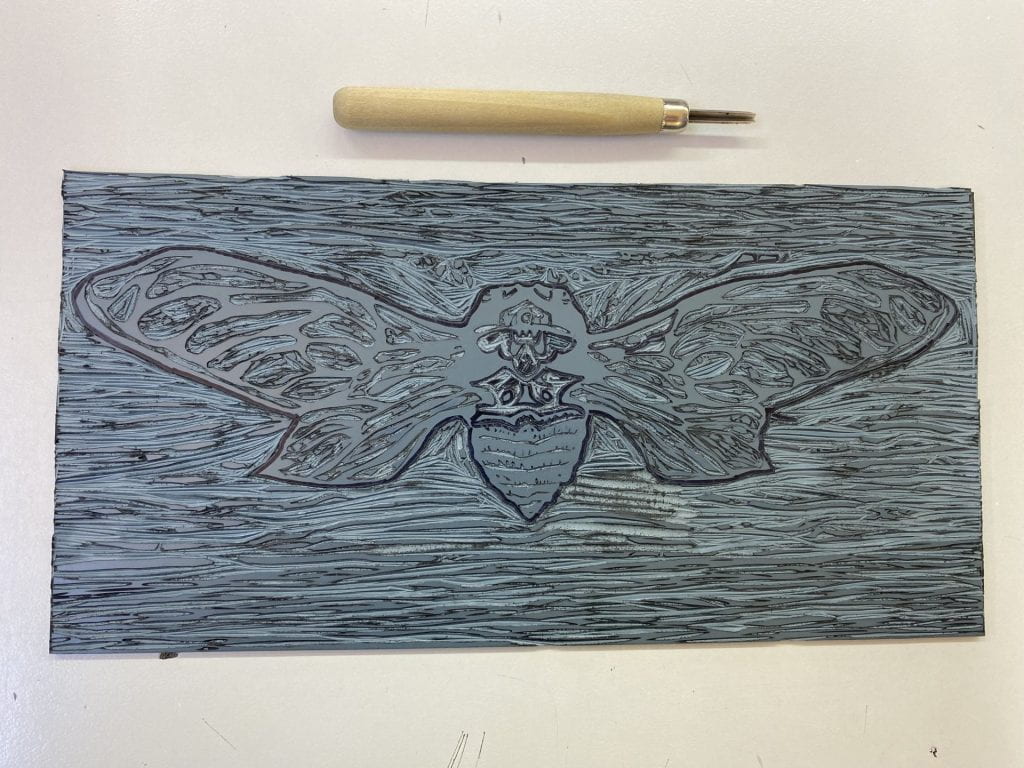Organised
Throughout the entirety of this semester, I have found myself meeting deadlines without any struggle. I have found that by utilising my class time and working effectively and efficiently, I was able to complete my artwork and other submissions on time. I was able to keep myself organised and on-track by creating a checklist of all the work I had due, and by consistently setting goals for myself to finish my work by a certain date.
Inquisitive
The vast majority of my designs were inspired by nature. I am drawn to the organic shapes and textures found in nature, and find them to be beautiful when incorporated into art. For example, my final etching print depicted a dragonfly. The intricate texture of the dragonfly’s wings, almost mimicking a mosaic, is what really stood out to me about that design. My test lino print depicted a human heart, and my final lino print, of a cicada spreading its wings. The fine natural details of each piece, when printed, can come to light.
Problem Solving
Of all processes, I found the most success in the process of etching. If it is ensured all the ink is wiped off the acrylic plastic plate when printing, the final image is almost guaranteed to come out clean and clear after being run through the etching press. This is the exact reason why etching is the most reliable of printing techniques. I especially like it because etching allows you to include fine details, similar to a drawing, without the ink being too dark and bleeding into each when printed, unlike lino print. When I attempted to carve fine lines into my lino print, the ink would sit in the grooves, and the lines wouldn’t show. Therefore, etching was the most effective process for my designs.
The first few times I tested etching and lino printing, I found that I would either use too much or too little ink on my prints. It came with a lot of trial and error, but ultimately, I was able to resolve these errors by altering my method. A lot of the time with etching, I found myself not being thorough enough with wiping the ink off the acrylic etching plate, resulting in lines that were too thick to show the details of my image and a border shown around my image. I resolved this by wiping more than necessary, especially around the border of the plate, to ensure the print was clean. With lino, I found that I would often not pick enough ink up with the roller. I resolved this by ensuring I could hear a distinct zipping sound when adding the ink to the roller, so that it was fully coated. I also made sure to double coat my lino carving, so that my print was defined.
Creative
My final works were quite successful, although there are some improvements that could have been made. For one, my final etching work was printed on an angle. As I put it through the etching press, I did not line the plate up with the paper straight, and therefore, it printed on an angle. My final lino featured a lot of detail, but some of my carving looked rushed and crooked, as I was impatient when carving the lino. Overall, I am quite proud of both of my final pieces, as I do not have much art experience, and barely any exposure to printing methods.



